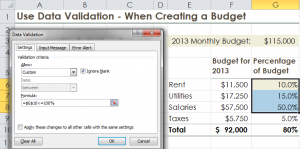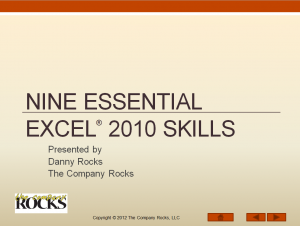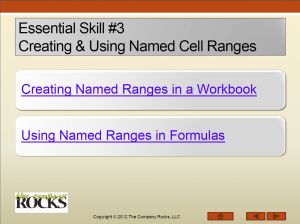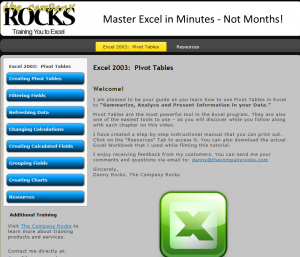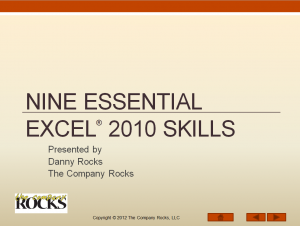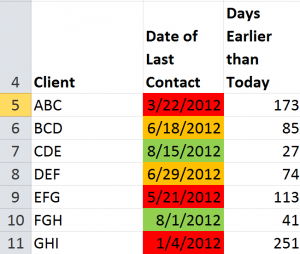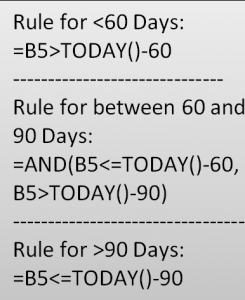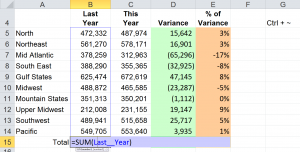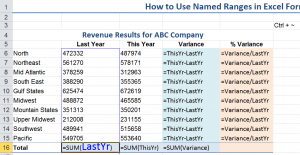Recently, one of my viewers wanted to know which formula he could use to prevent an end-user from imputing a value that would exceed his budget. I created this video tutorial to demonstrate my response.
Use a Formula in Data Validation
I have identified Data Validation as one of the “Nine Essential Skills in Excel.” Here is one example – Using a Formula in Data Validation to prevent an input entry from exceeding a set budget amount
A Formula that Evaluates to TRUE
The “key” to understanding how use Formulas in Data Validation – When the formula answer is TRUE, the entry is accepted; When the answer to the formula is FALSE, the Error Message that you create prevents an invalid entry.
Remember, that in Data Validation, only the STOP style will prevent an invalid entry.!
Video Training Resources
I invite you to visit my secure online shopping website – http://shop.thecompanyrocks.com – to preview the many video training resources that I offer you.
Watch This Tutorial in High Definition
Follow this link to watch my Excel Tutorial in High Definition on my YouTube Channel – DannyRocksExcels
 Learn How to Use Data Validation When Creating a Budget [ 10:43 ] Play Now | Play in Popup | Download (6520)
Learn How to Use Data Validation When Creating a Budget [ 10:43 ] Play Now | Play in Popup | Download (6520)